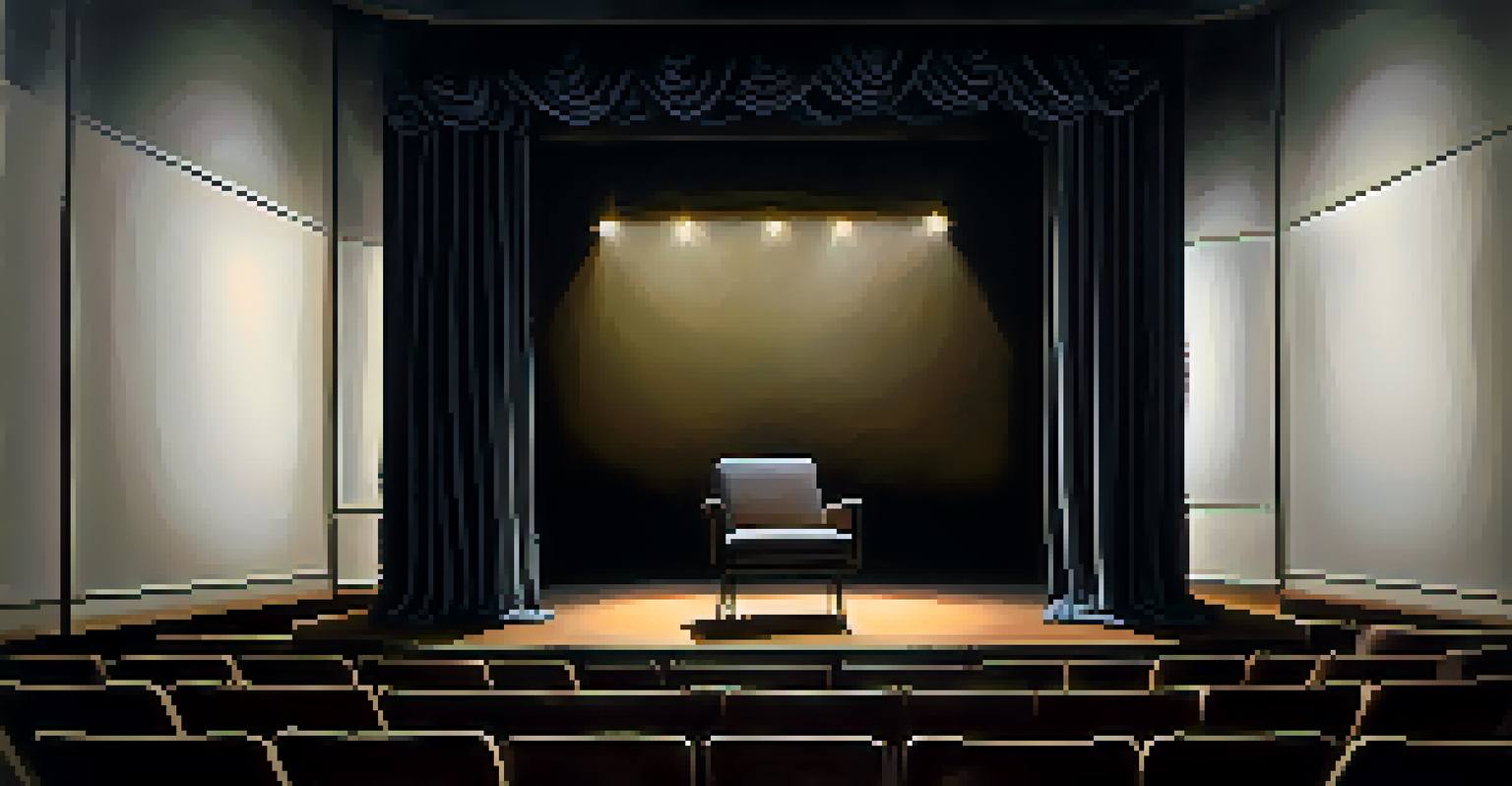The Significance of Props: Small Objects with Big Meanings

Understanding the Role of Props in Storytelling
Props serve as the tangible elements that bring stories to life, creating a visual language that resonates with the audience. They can be anything from a simple cup of coffee to elaborate sets in a theater production, each chosen for its ability to enhance the narrative. Just as a painter selects colors to evoke emotions, a storyteller uses props to add depth and context, making the story more relatable.
Objects can be a powerful way to tell a story. They can create a sense of place, evoke emotions, and reveal character.
Think about your favorite movie or play; how many objects can you recall that had a significant impact on the story? Perhaps it was a specific piece of jewelry that symbolized love or a letter that revealed a crucial plot twist. These objects often hold more weight than the characters themselves, serving as a bridge between the audience's experiences and the unfolding drama.
Ultimately, props are not just accessories; they are essential tools that enrich storytelling. They can evoke emotional responses, highlight themes, and even propel the narrative forward. A well-placed prop can create memorable moments that linger long after the story concludes.
The Emotional Weight of Everyday Objects
Everyday objects often carry significant emotional weight, acting as symbols of our personal stories. For example, a child's teddy bear can evoke memories of comfort and safety, while an old family photo might trigger nostalgia and reflection. These props remind us of the connections we've forged and the experiences that shape who we are.

In films, props are carefully chosen to resonate with audiences on a deeper emotional level. A wedding ring might symbolize commitment, while a broken clock could represent lost time. By using these everyday items, storytellers tap into universal emotions, allowing viewers to see themselves in the narrative.
Props Enhance Storytelling Depth
Props serve as essential tools that add emotional resonance and context, enriching narratives and making them more relatable.
This emotional resonance is what makes props so powerful. They remind us that even the smallest object can hold immense significance, turning a simple story into a more profound exploration of human experience.
Cultural Significance: Props as Symbols
Props often reflect cultural values and beliefs, serving as symbols that communicate deeper meanings. For instance, a dragon in Chinese culture represents strength and good fortune, while in Western contexts, it may symbolize danger or fear. Understanding these cultural nuances can enrich our interpretation of stories across different mediums.
The stories we tell are often shaped by the things we hold dear; every object has the potential to carry a narrative of its own.
When filmmakers and playwrights select props, they often consider the cultural context in which the story unfolds. A traditional piece of clothing or a specific type of food can evoke a sense of place, immersing audiences in the cultural backdrop of the narrative. This attention to detail enhances authenticity and allows viewers to connect with the characters on a more profound level.
By incorporating culturally significant props, storytellers create layers of meaning that resonate with diverse audiences. This approach not only enriches the narrative but also fosters a greater understanding of different cultures and perspectives.
Props in Theater: The Art of Minimalism
In theater, props play a crucial role in creating an immersive experience, often in minimalist settings. With limited resources, theater productions rely on a few carefully chosen items to convey complex ideas and emotions. This minimalism forces both actors and audiences to focus on the essence of the story, making every prop count.
For example, a simple chair can transform from a throne to a bus seat, depending on the context, showcasing the versatility of props in theater. This adaptability allows for creative storytelling, as actors use their imagination to bring the props to life, encouraging the audience to engage more actively with the performance.
Cultural Context Influences Props
Props reflect cultural values and beliefs, allowing storytellers to create layers of meaning that resonate with diverse audiences.
Moreover, the minimalist use of props in theater often invites the audience to fill in the gaps with their imagination. This participatory experience can create a deeper connection to the story, emphasizing that the meaning of a prop can shift dramatically based on the viewer's perspective.
Props in Film: Crafting Visual Storytelling
In film, props are integral to crafting a visual narrative that captivates audiences. Filmmakers meticulously select props to convey character traits, setting, and plot points, ensuring that each item serves a specific purpose. A character's choice of weapon, for example, can reveal their personality, while the setting's props can establish a mood or tone.
Consider how a vintage car can evoke a sense of nostalgia, telling viewers that the story takes place in a bygone era. Every prop contributes to world-building, creating a rich tapestry that draws viewers into the film's universe. This attention to detail enhances the overall storytelling experience, making it more immersive.
Additionally, the way props are used on screen can create iconic moments that stay with viewers long after the credits roll. From the glowing ring in 'The Lord of the Rings' to the red dress in 'Schindler's List,' these objects become symbols that carry significant weight in the story, reinforcing the emotional impact.
The Evolution of Props in Digital Storytelling
As technology evolves, so do the ways we use props in storytelling, particularly in digital formats like video games and virtual reality. In these mediums, props can be interactive, allowing users to engage with the story in unique ways. A sword in a video game isn't just a prop; it's a tool that enables players to shape their adventure.
Digital storytelling often blurs the lines between props and narrative, creating a more immersive experience for users. For instance, in a virtual reality environment, a simple object can trigger an entire narrative arc, allowing players to explore their surroundings and uncover hidden stories. This interactivity transforms the role of props from passive elements to active participants in the storytelling process.
Future Innovations in Props
Advancements in technology, like AR and AI, will transform props into interactive elements that personalize storytelling experiences.
As we continue to embrace technology, the significance of props in digital storytelling will only grow. These innovations challenge traditional storytelling methods, pushing the boundaries of how we perceive and interact with narrative.
The Future of Props: Innovations and Trends
Looking ahead, the future of props in storytelling is likely to be shaped by advancements in technology and changing audience expectations. With the rise of augmented reality (AR) and artificial intelligence (AI), we may soon see props that adapt to individual viewers, creating personalized storytelling experiences. Imagine a book where the illustrations come to life based on the reader's emotions!
Moreover, as sustainability becomes increasingly important, the use of eco-friendly materials in creating props will likely gain traction. Storytellers will seek innovative ways to incorporate sustainable practices while still delivering engaging narratives. This shift not only reflects a growing awareness of environmental issues but also adds a layer of relevance to the stories being told.

Ultimately, the evolution of props will continue to reflect broader societal changes and technological advancements. As we embrace new storytelling methods, props will remain vital in conveying meaning, connecting audiences, and enhancing the overall narrative experience.